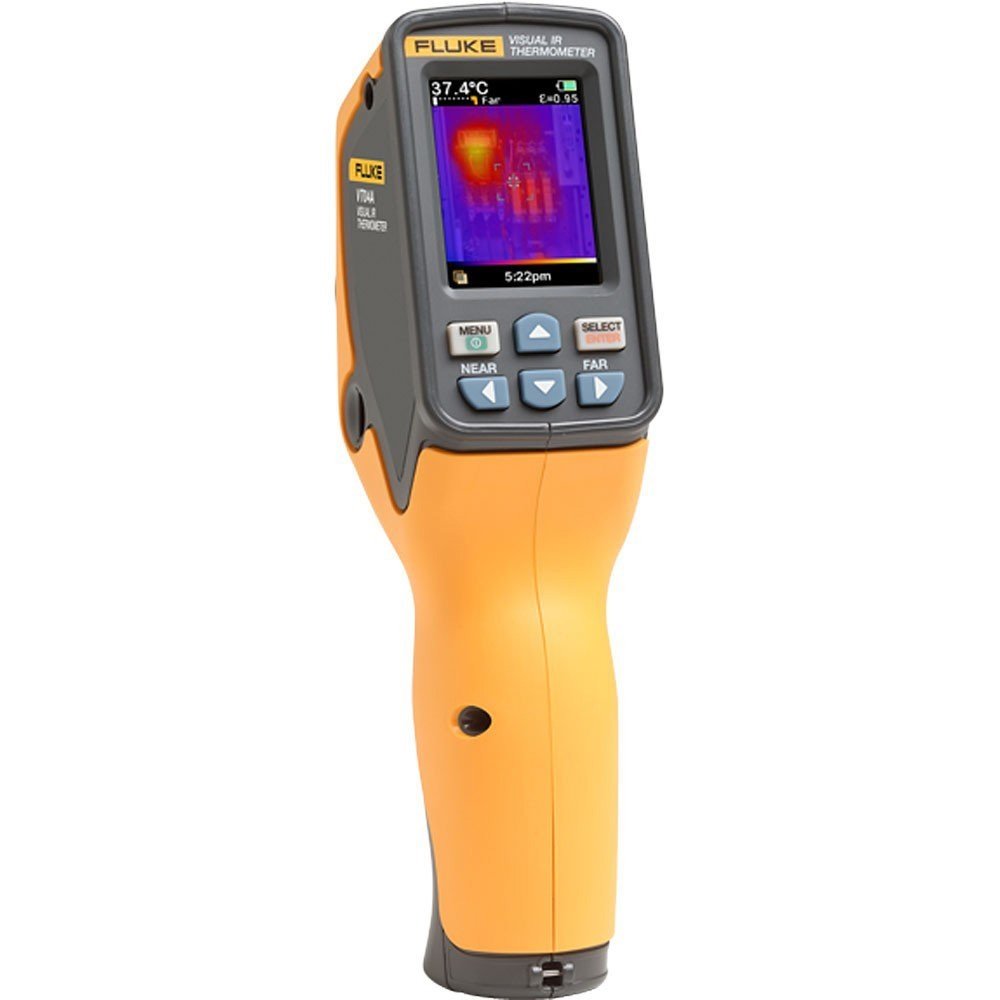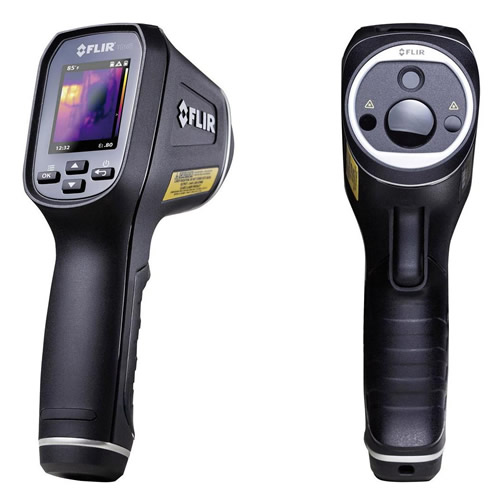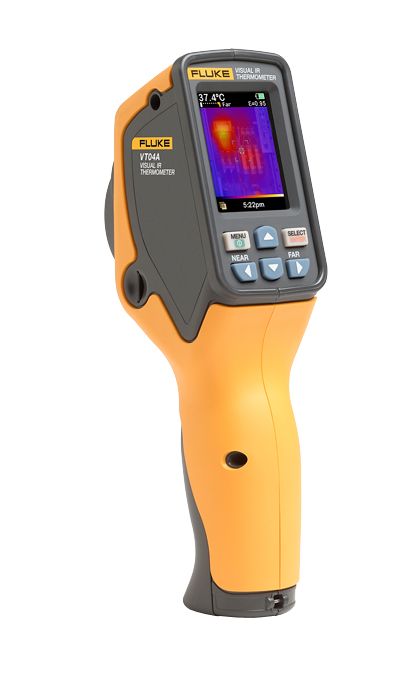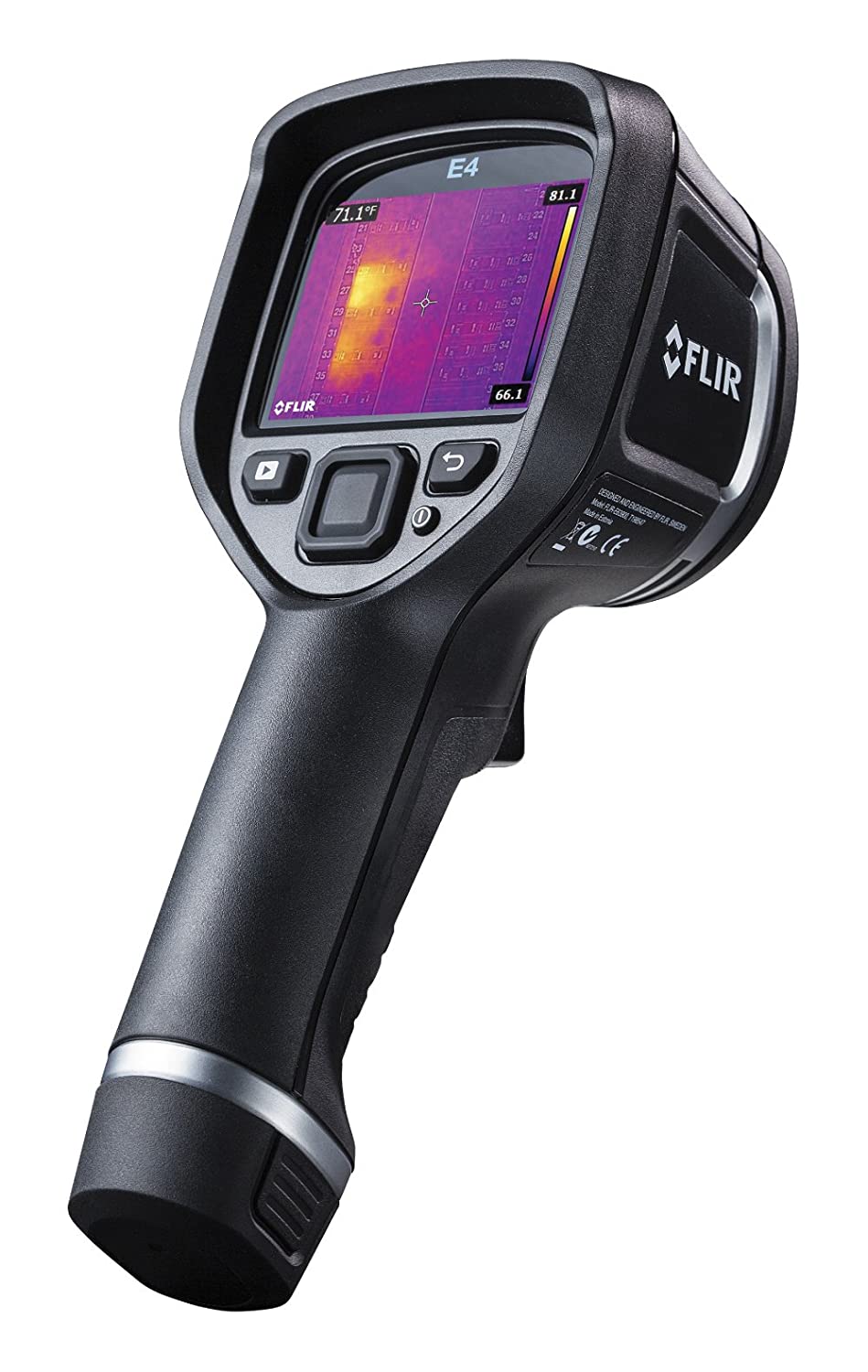We compare three thermal cameras for professionals, two from Flir and one from Fluke and find out which of these is the right one for your thermal inspections, based on image quality, features, battery life and more
Here is our review and camera comparison of the Flir E4 vs Flir TG165 vs Fluke VT04:
Here is our review and camera comparison of the Flir E4 vs Flir TG165 vs Fluke VT04:

| Product | Type | Resolution | Battery capacity | Waterproof | LCD screen | Price |
|---|---|---|---|---|---|---|
FLIR TG165  | Handheld | 80 x 60 | 5 hours | No | 2″ TFT | Click for more info |
Fluke VT04  | Handheld | 31 x 31 | 8 hours | No | 2″ | Click for more info |
FLIR E4 Compact  | Handheld | 80 x 60 | 4 hours | No | 3″ | Click for more info |
Let’s have a look at each product in particular.
FLIR TG165
| Product | Type | Resolution | Battery capacity | Waterproof | LCD screen | Price |
|---|---|---|---|---|---|---|
FLIR TG165  | Handheld | 80 x 60 | 5 hours | No | 2″ TFT | Click for more info |
It has an infrared sensor that provides a resolution of 80 x 60 pixels. This specific model doesn’t have a visual camera and so you can’t use the MSX image enhancement mode. This is a fixed focus camera, so you can’t adjust the sharpness of the image.
Let’s have a look at its temperature measurement performance. This thermal imaging camera can measure anything in a thermal scope from -13 to 716°F( -25 to 380 C) with a staggering +/-1.5°C accuracy as this camera can output highly precise measurements. Its infrared sensor can react to temperature changes with a 0.15 C thermal sensitivity.
A key feature of this thermal imager is its laser pointer, two laser pointers to be exact. Whenever you press the trigger it activates them and this helps you work easier by knowing the exact spot that you are measuring at every step of the way. Along with the lasers, the startup time is very short because it only takes a few seconds for the infrared camera to start.
This is one of the few Flir cameras to have an SD Card slot for internal memory, giving you the option to expand it to suit your needs. The thermal images aren’t in radiometric form which means they don’t hold any kind of temperature data, so they shouldn’t take up much space. It also has a rechargeable battery that provides a 5-hour battery life, more than enough for professional use. The screen size is not particularly large, just 2 inches.
It is not IP-54 rated, so it is not waterproof or dustproof. If that is an important feature, then you should have a look at the newer model, the Flir TG165-X which also has a visible light camera for MSX. If you want to go for a mobile version, then the Flir One Pro thermal imager or Seek Compact would be good options. If you are doing electrical inspections, there is a Flir multimeter which combines the best of electrical tools and infrared thermal imaging, for example a clamp meter with a thermal sensor.
The default warranty on the device is one year, but you can extend it to a 2-10 warranty which means 2 years for the device and 10 years for the thermal vision sensor.
Fluke VT04
| Product | Type | Resolution | Battery capacity | Waterproof | LCD screen | Price |
|---|---|---|---|---|---|---|
Fluke VT04  | Handheld | 31 x 31 | 8 hours | No | 2″ | Click for more info |
So how do these thermal imaging infrared cameras compare, the Fluke VT04 vs Flir TG165?
The main difference between these two handheld thermal cameras, the Flir TG165 vs Fluke VT04 is the thermal resolution, with more than 5 times the number of pixels. It also has a longer battery life of 8 hours compared to 5, but a much worse thermal sensitivity of 0.25 C compared to 0.15 on the TG165. The Fluke VT04 also has a visual camera for image enhancement while the TG165 doesn’t.
The VT04’s temperature range is also narrower from 14° F to 482°F (-10° to 250°C) and what is also narrower is the viewing angle with a 28° x 28° field of view. This Fluke IR camera also has a much slower startup time, up to 20 seconds compared to the Flir which starts in just a few seconds.
There is Fluke software for creating thermal reports just like there is Flir software (Flir Tools), however the software from Flir is more polished and offers a better UI.
The Fluke’s rubberized design feels better to the touch so in the Flir vs Fluke thermal cameras debate, the materials are superior on the VT04 and the design comes down to the preference of the user.
FLIR E4 Compact
| Product | Type | Resolution | Battery capacity | Waterproof | LCD screen | Price |
|---|---|---|---|---|---|---|
FLIR E4 Compact  | Handheld | 80 x 60 | 4 hours | No | 3″ | Click for more info |
The E4 has a visual camera and MSX technology. Even though both cameras have the same thermal resolution, the picture quality couldn’t be more different. The E4 outputs a thermal image with much higher clarity, contrast and details. The sharpness is better too.
Another big advantage for the E4 is that it stores the thermal images together with all the temperature data in radiometric form.
The E4 has a lower battery life than the TG165 with 4 hours of thermal imaging compared to 5. Then there is the fact that this camera has an internal memory instead of an SD card slot. Interestingly, the E4’s temperature range is narrower than the TG165’s with a range from -4° F to 482°F (-20° to 250°C).
But the same cannot be said about the viewing angle where the Flir E4’s field of view is wider with a 56° x 42° viewing angle.
Fluke VT04 vs Flir TG165 vs Flir E4 – which one to choose?
The Flir TG165 offers the best value in terms of how much you pay for the camera and the features and image quality that you get, no doubt.If you need a more advanced device with a higher image quality and which stores the images together with the temperature data for each pixel then the E4 is the right tool for you.
Other cameras you may want to look at from Flir are the Flir c3 pocket thermal camera and the newer version, the C3-X. From Fluke, there is the new Fluke Ti300 and the Fluke TiS20 with Fluke Connect.
Our Score
